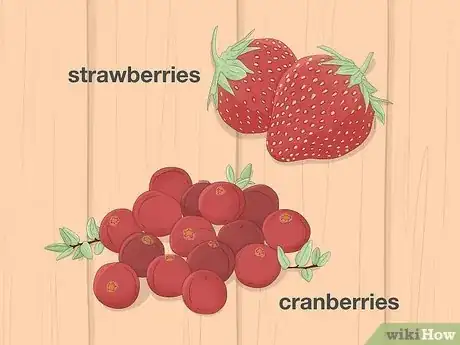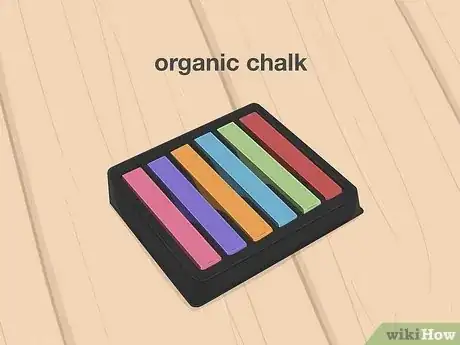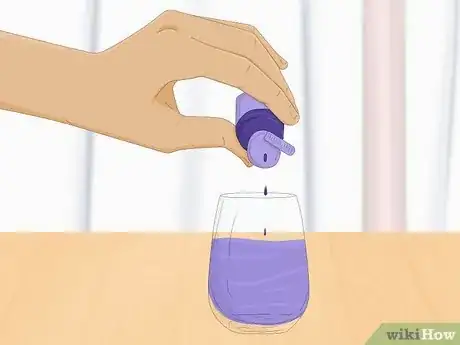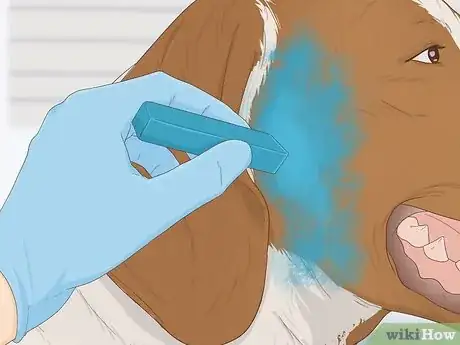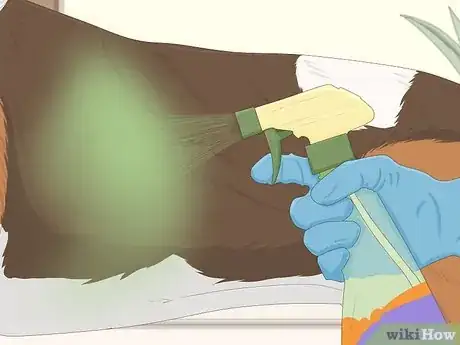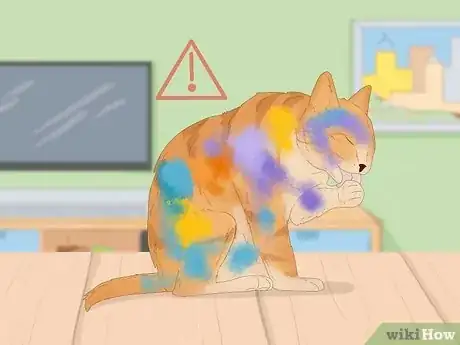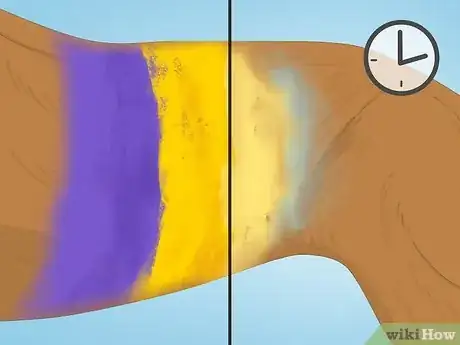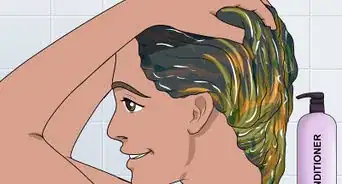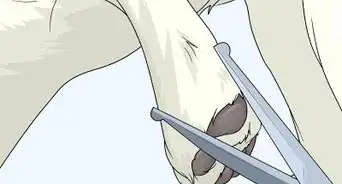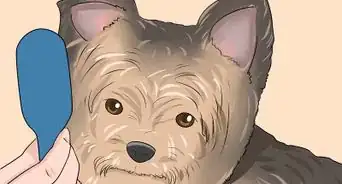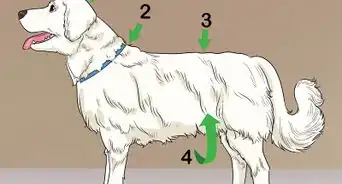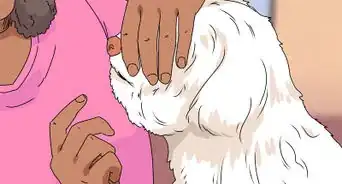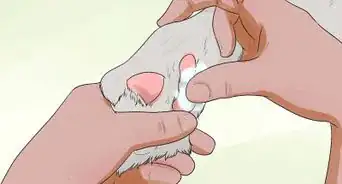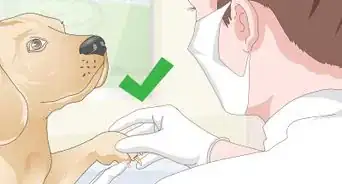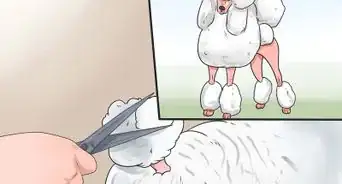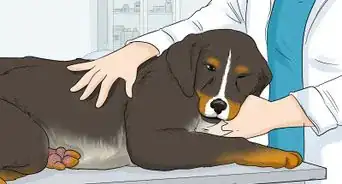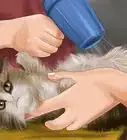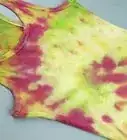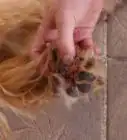wikiHow is a “wiki,” similar to Wikipedia, which means that many of our articles are co-written by multiple authors. To create this article, 27 people, some anonymous, worked to edit and improve it over time.
There are 10 references cited in this article, which can be found at the bottom of the page.
This article has been viewed 169,350 times.
Learn more...
Dyeing your pet is very controversial. Some people consider this very dangerous, and some have even banned the practice.[1] However, it is very popular in certain areas. In China, for example, dyeing dogs -- especially making them look like other animals -- is incredibly popular.[2] . If you want to dye your pet, heed warnings and always read ingredient labels before doing so.
Steps
Determining Safety
-
1Avoid using human hair dye. Human products are designed specifically for humans, not pets. They often contain harsh chemicals that can harm your pet.
- Dye can be absorbed through your pet’s skin and make it sick.
- Your pet can potentially lick the dye and that could harm it.
-
2Do not dye a pet with existing health conditions. This could further harm it or cause further harm. Always check with your vet to make sure that this grooming is safe.Advertisement
-
3Use organic food dye. These dyes are made from natural products. Read the label and talk to your vet to make sure that the ingredients will not cause harm via skin absorption or consumption.
- Some non-organic food dye (Blue 1, Citrus Red 2) have been linked to adverse effects in animals including allergic reactions and tumors. Always talk to your vet before using anything on your pet. [3]
-
4Use organic foods. If you are feeling particularly crafty, you can use the actual food product to produce a colorful dye. By going straight to the source, you will know exactly what is included in the dye.
- Dye foods include asparagus, beets, sweet potatoes, strawberries, spinach, cranberries, and carrots.[4]
-
5Try an organic chalk. There are pet-friendly dye chalks that may be used to temporarily dye your pet’s fur. As always, check with your vet before application.[5]
-
6Do NOT use spray paint. This is incredibly toxic for pets (and humans) and will only result in illness or even death.
- Do not use anything that will cause your pet pain. This includes acids or bleaches.
Dyeing Your Pet
-
1Add water to food coloring. Depending on what color you want to work with, you may need to add more water to get the desired color. Start with one cup of water per drop of food coloring. Mix well.[6]
- Try mixing the dye and water into a spray bottle. This will make it easier to apply it to your pet.
-
2Start with a clean pet. Make sure her fur is clean and well brushed. Dyeing works better with lighter fur. Cleanliness will help the dye last longer and will look better.
-
3Smash or pulverize food. Use a food processor or a masher to break down foods into a paste, mush, or powder. If you are using a dry food, try adding a small amount of water (1 tbs) until a desired consistency is reached.[7]
- For trickier colors to obtain (like blues and purples), try adding the mashed food mixture to baking soda to make a paste. Start with ¼ of a cup of baking soda and add it to your food mixture until desired amount/color is achieved.
-
4Wear latex gloves. Unless you want to also dye your hands, make sure you are wearing latex or plastic gloves to protect your own skin.
-
5Apply chalk directly to damp fur. This is easy to do in a few simple steps.[8]
- Dampen your pet's fur with a spray bottle of water. You do not want to soak the fur, but spray so the fur is damp to the touch.
- Apply the chalk directly to the damp fur. If you want a lighter color, use less chalk. If you want more or darker color, apply more chalk.
- Wait for the fur to dry. This will help the color set into the fur.
- Use a blow dryer (not too hot, try a medium setting) and blow warm air over the chalked fur. This will help the color set and last longer.
-
6Apply the dye using your hands or a spray bottle. There are a few tips to make this step go smoother. You can also use cotton swabs and small, clean, paint brushes to get areas around the eyes, ears, mouth, and nose.
- Apply dye mixture in small areas. Start with an inconspicuous area to test the color. This will also help determine how the she will react to being dyed.
- Avoid spraying dye into her eyes, mouth, or nose. This could harm the animal and/or agitate it.
- Apply one color at a time. It is recommended to let one color dry before applying any more near or on top of it. This will stop color from running or mixing together.
Caring for Your Dyed Pet
-
1Avoid letting your pet lick the dye. This could harm her or dye her mouth. Watch her for signs of licking and distract her until the habit is formed.
-
2Watch for an allergic reaction. Her skin is just as sensitive as ours. Watch for biting, scratching, redness, or swelling. [9]
- If this occurs, take her to the vet immediately.
-
3Acknowledge color fading. Just like dyeing human hair, an animal’s dyed fur will fade over time. If you want her to keep her vibrant looks, apply the dye as needed.[10]
-
4Observe behavioral changes in your pet. If she suddenly stops eating, become aggressive, bites or licks her fur, consider removing the dye or taking her to the vet.
Community Q&A
-
QuestionCan I use tie dye on a dog?
 Community AnswerThe chemicals in tie dye are not safe for a dog's skin and could severely injure/kill the dog.
Community AnswerThe chemicals in tie dye are not safe for a dog's skin and could severely injure/kill the dog. -
QuestionIs it harmful if my rabbit stepped in tie dye?
 Community AnswerNot unless your rabbit licks it, just remove it.
Community AnswerNot unless your rabbit licks it, just remove it. -
QuestionCan I make my dog look like pikachu
 Community AnswerYes. If your dog is the correct shape and size, that is a popular look.
Community AnswerYes. If your dog is the correct shape and size, that is a popular look.
References
- ↑ http://www.huffingtonpost.com/2013/02/10/artificially-dyeing-animals_n_2657162.html
- ↑ http://edition.cnn.com/2010/WORLD/asiapcf/08/27/china.dyeing.dogs.pandas/
- ↑ https://cspinet.org/new/pdf/food-dyes-rainbow-of-risks.pdf
- ↑ http://dogs.thefuntimesguide.com/2013/08/dog-hair-dye.php
- ↑ http://www.nydailynews.com/life-style/pet-owners-pay-groomers-paint-pooches-article-1.1563670
- ↑ http://www.care2.com/greenliving/8-ways-to-make-organic-diy-food-coloring.html
- ↑ http://www.networx.com/article/8-ways-to-make-organic-diy-food-coloring
- ↑ http://www.seventeen.com/beauty/hair/advice/a17044/hair-chalking/
- ↑ http://www.petmd.com/dog/conditions/skin/c_dg_food_reactions_dermatologic
About This Article
To dye your pet, start by giving it a bath, since dyes work best on clean fur. Next, purchase organic chalk in the desired color or colors. Never use human hair dye, since the chemicals are too strong and can make your pet sick. Then, dampen your pet's fur with water from a spray bottle and apply the chalk directly to the damp fur. Finally, let the fur air-dry most of the way and set the color with a quick blast from a blow dryer. For tips on dyeing with other substances, like organic food coloring, read on!



